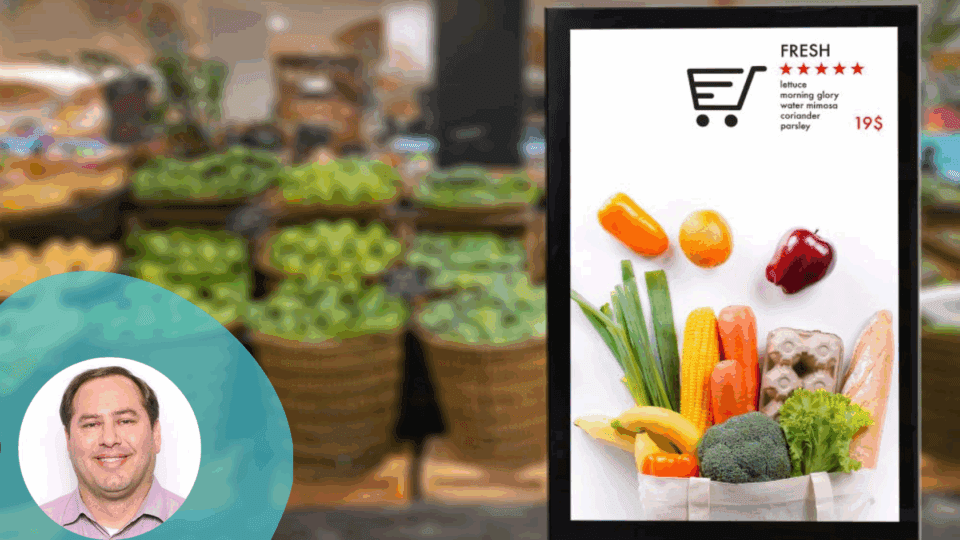Modern retail media is built on clicks, but the overwhelming majority of conversions still happen in the aisles. Every square foot between the entrance and the checkout is a potentially missed customer engagement moment waiting to happen — if it’s not part of a bigger strategy. While U.S. retailers have spent the past two decades perfecting the digital art of online retail media strategy, such as precise targeting, sponsored products and the incorporation of shopper data, their European counterparts were busy mastering something more analog: the store itself.
In Europe, retail media didn’t start behind an online screen. It started on the floor with signage, endcap displays, entryway takeovers and cardboard cutouts that moved products and minds alike. While the U.S. raced into digital-first retail media, Europe built its house from the ground up in the store. And today, that physical-first foundation is proving to be a competitive advantage. It’s one that American retailers can no longer afford to ignore.
A Foundational Flip-Flop
First, let’s be clear: The U.S. didn’t take the wrong route, just a different one. For example, when Walmart began building its digital media engine more than 20 years ago, the industry simply followed suit. The web was new territory, online ads were novel and effective, and cracking the code of ecommerce felt like the only way forward.
Then, digital retail media exploded: quickly, tactically, but often in silos. Store teams on this side of the Atlantic stayed in their lanes while online teams built their own empires. The two sides exchanged polite nods and basic processes but rarely shared a strategy.
Meanwhile, in Europe, retailers took a more holistic approach.
They weren’t racing to digitize at all costs. Instead, they doubled down on the in-store experience, seeing physical retail not as a legacy channel but as a media opportunity to engage customers in its own right. Even as digital crept in, the emphasis stayed on integration. Merchandising and marketing talked. Trade budgets and media budgets overlapped. Strategy came first, and execution followed suit.
The result was that several top European retailers created cohesive, omnichannel ecosystems rooted in physical experiences, and then layered digital on top. In the U.S., retailers have tried to reverse engineer that harmony ever since.
Strategy Over Screens
It’s not that U.S. retailers lack tools. They often just lack alignment.
Ask 10 retailer media teams what their in-store media strategy is, and only two or three will give a clear answer. That’s not a knock against capability. It’s a reflection of how in-store has been treated as a tactical afterthought, owned by the merchant team, instead of a strategic pillar of the retail media strategy.
European retailers changed the narrative.
For example, agencies like Nectar360, the in-house arm for Sainsbury’s and Argos, don’t treat in-store like a second-class channel. They treat it like a campaign cornerstone. At events like Retail MediaX, they showcased not just signage but seamless omnichannel campaigns: Pepsi branding wrapped around venues, mirrored across digital out-of-home (DOOH) placements and echoed in online placements.
It was all tied to one big idea.
The takeaway here is that the best European campaigns don’t start with screens. They start with strategy. And for U.S. retailers, that shift in mindset could unlock a new chapter of growth.
Siloed and Stalled: America’s Retail Blind Spot
Why is integration so hard in the States? Weirdly enough, blame success.
When giants like the aforementioned Walmart and Target built their digital infrastructure, they modeled it after their organizational structure: separate, specialized teams focused on either stores or online. For a while, it worked. But as online matured, the lack of integration revealed cracks as well as opportunities.
Retailers that modeled themselves after the big players inherited the same silos. Merchants did their thing, and digital teams did theirs. But store teams were often left out of the retail media conversation altogether.
Contrast that with Europe, where integration was baked in. Cross-functional teams weren’t revolutionary; they were standard. Merchants and marketers collaborated by default. Budgets flowed across formats.
That cultural difference, subtle as it seems, laid the groundwork for a more connected retail media model.
The pandemic temporarily paused progress in the U.S., pulling attention (and budget) back online. Curbside pickup, online delivery, and ecommerce UX took precedence, and rightfully so. But now, with digital systems more mature and in-store traffic rebounding, retailers have a fresh opportunity to reconnect the dots. And they’re beginning to.
In-Store, but not Plug-and-Play
Since around 2017, the big retailers began to dismantle their silos. Former online leads spread their wings to lead retail media teams at other retailers, bringing integration playbooks to new roles and significantly opening up budgets as a result. Retailers are now experimenting with in-store media pilots that are powered by a broader omnichannel strategy. The gears are finally turning, and there are examples of U.S. retailers who are clearly ahead of the pack..
But here’s the catch: true in-store retail media isn’t a side hustle. It requires merchant buy-in, marketing investment, CMO-CFO alignment and infrastructure planning requiring buy-in from the COO.
Of course, physical retail isn’t easy. You can’t drop a screen into a store and call it strategy. Store layout, merchandising constraints and more are all operational logistics challenges and creative variables. That’s why in-store advertising demands more than tools. It demands a plan.
Digital screens, for example, are more often underutilized or misutilized across retailers in the U.S. It’s not just in quantity, but in purpose. Too often, they’re deployed without clear KPIs or campaign alignment. In-store audio, while easier to implement, faces the same challenge as well as opportunity. Without a cohesive narrative, these touch points become noise instead of influence.
That’s why the European model, which starts with a big idea and builds toward execution, is so instructive. It maximizes each touch point and connects them altogether.
The Europe Effect
So what can U.S. retailers take from Europe’s playbook?
1. Start with strategy, not surfaces: Don’t let screens dictate the campaign. Let the campaign dictate the use of screens and shelves, signage, audio, DOOH and digital extensions.
2. Break the silos, for real this time: In-store retail media isn’t a standalone function. It lives at the intersection of merchandising, marketing and media. Get those teams in the same room. Joint business planning isn’t optional; it’s essential.
3. Tie it all to performance triggers: In Europe, pricing, promotions and inventory data help fuel in-store relevance. A price drop triggers signage messaging. A new SKU triggers endcap placement. It’s retail media that actually behaves like retail.
A Moment Worth Seizing
Retailers can’t stand up an in-store media network overnight. But they also can’t afford to sit out the next phase of retail media. With over 80% of purchases still happening in stores, the opportunity is too big and the gap too wide to ignore.
The U.S. built a retail media empire online. Now it’s time to bring that empire into the aisle. By learning from Europe’s integrated, strategy-first model, American retailers have a rare opportunity to turn every store into a stage and every moment into a media moment.
Sean Cheyney leads the creation and growth of Vistar Media’s Retail Media practice as the Head of Retail Media. In this role, he is responsible for the global retail media strategy and growth, bringing together Vistar’s industry leading OOH solutions into the retail media ecosystem for the benefit of retailers and their agency and brand partners.




